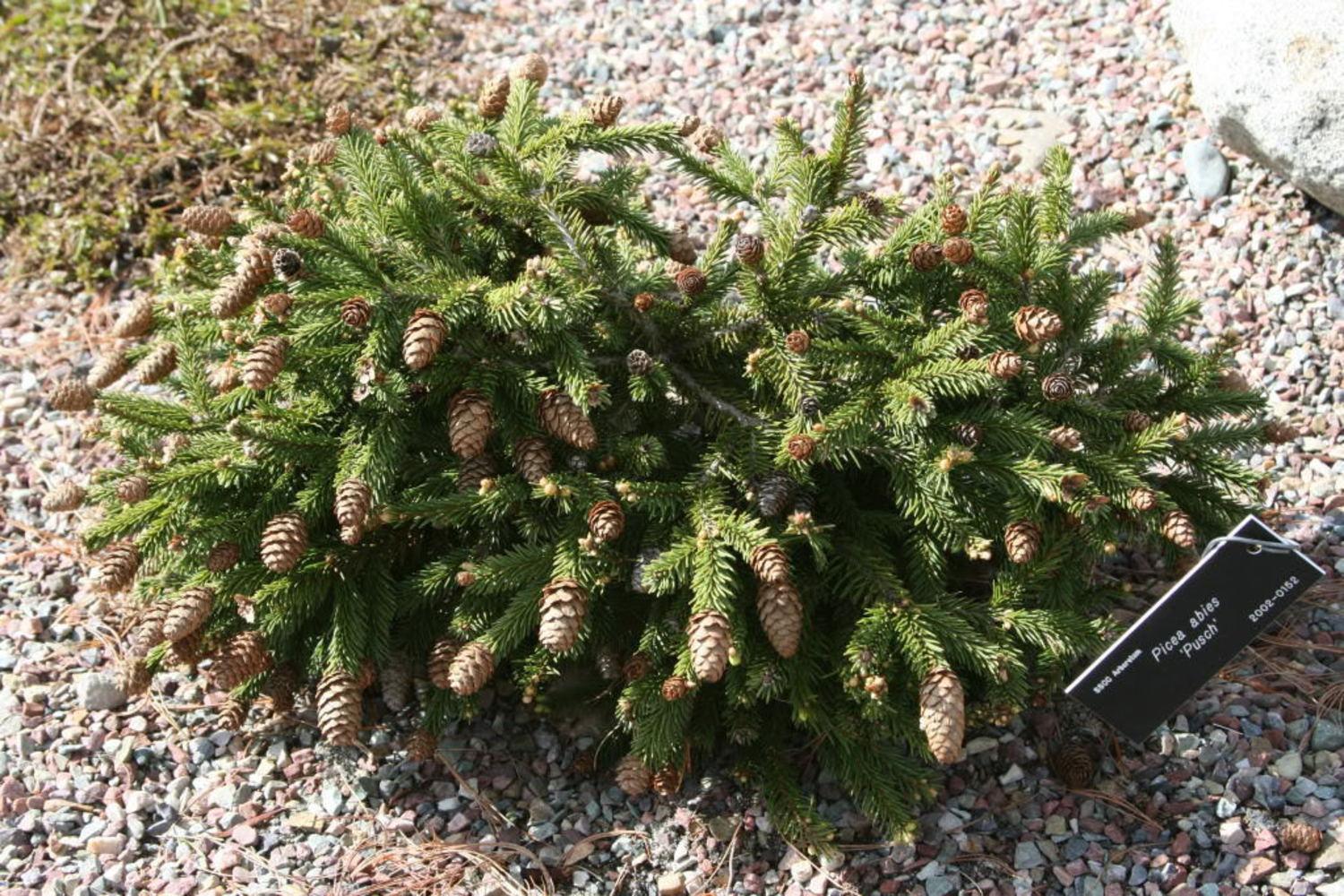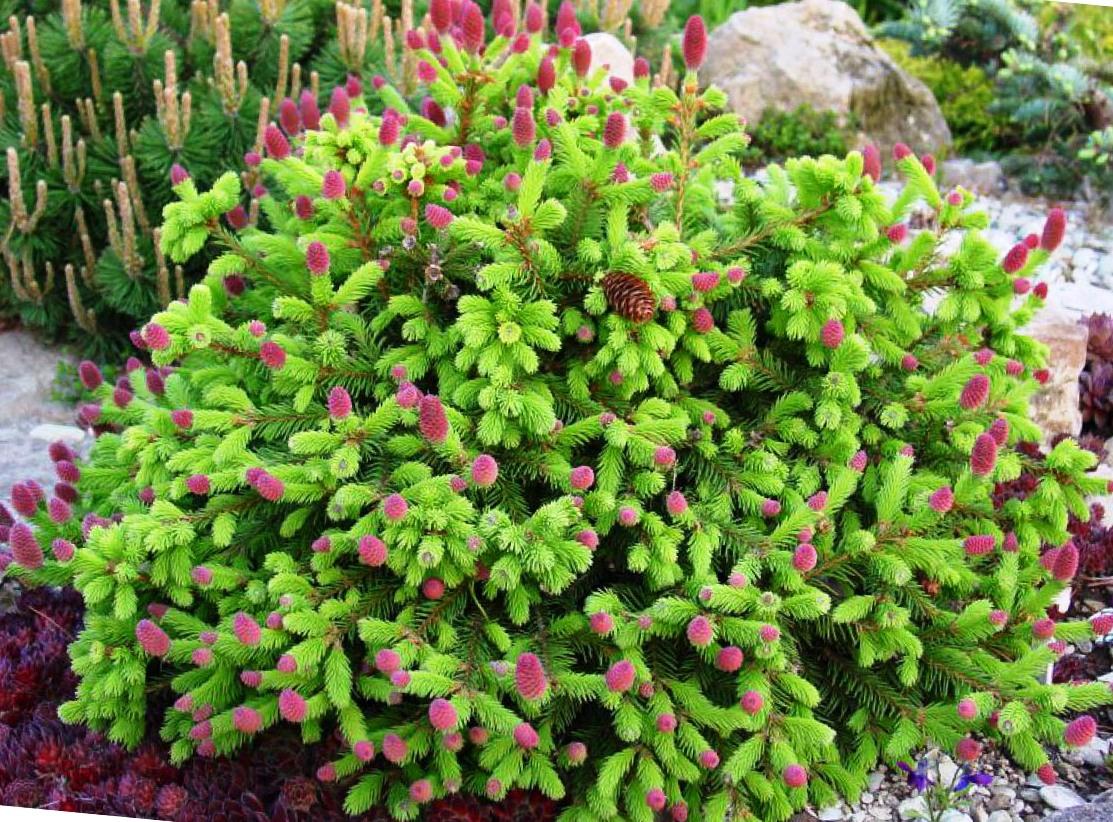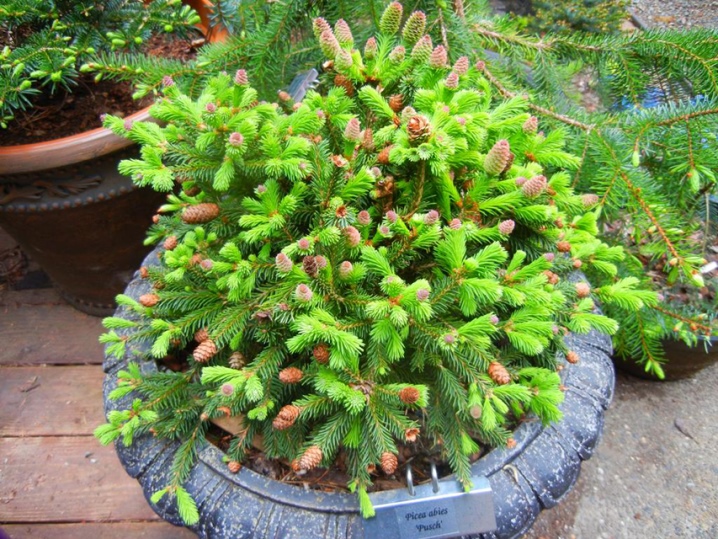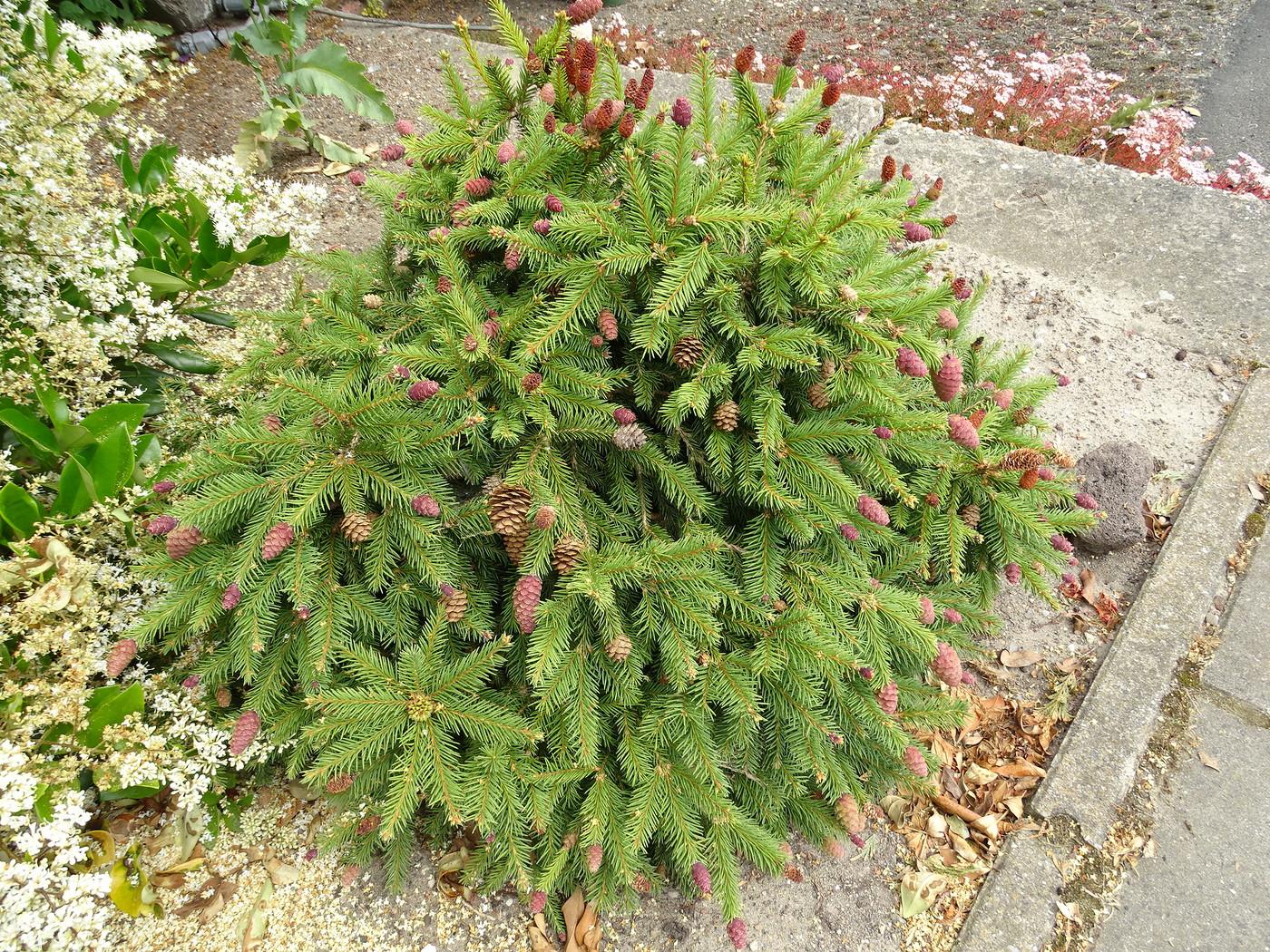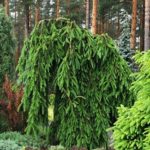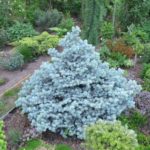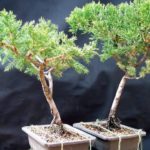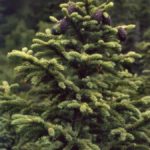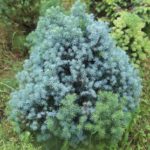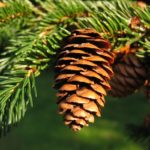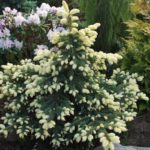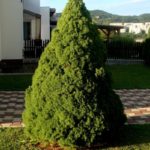Spruce variety Push is considered one of the most popular varieties of decorative dwarf plants. She was brought out by an employee of the University of Berlin, Pusch Werder. This happened in 1975. The culture was the result of a mutation of the Acrocona spruce. The resulting plant became known as the “witch’s broom.” Today this variety has gained wide popularity. Due to its excellent decorative properties, it is often used in landscape design.
Variety information
According to the description, Push spruce is an evergreen dwarf variety. Usually the tree does not have a leading shoot.It is characterized by many hanging and chaotically located short branches that form a loose asymmetrical crown. By 8-9 years it becomes denser and takes on a hemispherical shape.
The branches are often covered with frequent prickly needles measuring 1-2 centimeters. It is characterized by a tetrahedral shape. Old needles are dark green in color, young ones are light. Change of needles occurs at intervals of 6-10 years.
The culture is distinguished by large resinous buds, which are ovoid in shape and orange-brown in color. They form at the ends of the shoots. With the arrival of spring, fresh growth appears from such buds. From the age of 6 years, spruce of this variety begins to bloom.
Unique cones are considered a distinctive feature of the culture. They affect the decorative properties of the plant. During the flowering period, the cones acquire a very unusual color - crimson, pink, red. As the fruits ripen, they turn purple and in mid-summer they turn brown. The cones look especially attractive against the background of rich green needles. During flowering, the tree seems spectacular and attractive.
Area
The unusual spruce with pink or crimson cones is a relatively young crop that has already received recognition from gardeners. The plant is characterized by high resistance to frost. It can withstand temperatures down to -42 degrees.This makes it possible to grow crops in the harsh climate of Russia and other countries located in the northern regions.
The southern borders of the spruce distribution area are determined by a temperate climate. It is worth noting that the culture can hardly withstand the effects of heat and increased dry air.
Growing a crop requires compliance with a number of rules. Only by the age of 20 does the plant acquire the desired decorative properties. Therefore, producers are not too willing to plant Pusch spruce. Mature plants are highly expensive. Typically, seedlings on sale are 5-6 years old, which are sold already with cones. The standard types of culture look very impressive.
Landing
In order for a spruce with unusual cones to look attractive, it is important to strictly adhere to the agrotechnical rules for its cultivation. Compliance with planting recommendations is of particular importance.
This conifer needs acidic soil. It does not withstand the influence of salty soils. It is also permissible to plant the plant in soil with a neutral or slightly acidic reaction. To plant the crop, you should use a well-lit area with full moisture. It is important to take into account that excess or stagnation of moisture can lead to the death of the spruce. If there are such threats, it is worth placing at least 20 centimeters of drainage at the bottom of the planting hole.
Spruce Push is not too demanding on the nutritional composition of the soil. The plant is more suitable for sandy or light loamy soil. Before planting a crop, it is important to prepare the site. To do this, it is recommended to add organic matter to the soil.Compost, peat or rotted manure are suitable for this. Such substances must be mixed with soil.
At the same time, you should not use mineral fertilizers, since it is organic matter that gives the soil the required looseness. Mineral preparations are more suitable for plants during the subsequent growing season.
How to care for a tree
Like ordinary spruce, the Push variety is sensitive to dry weather and has difficulty withstanding prolonged drops in temperature. Therefore, after planting, it is worth mulching the plant well with any suitable substance.
In hot weather, the tree requires frequent watering. It is recommended to do this every 2-3 days. In this case, it is worth using about 10 liters of water per plant.
When growing Push spruce, formative and sanitary pruning is required from time to time. It is recommended to form the crown in the spring. This will help give the plant the required decorative effect. Sanitary pruning should be carried out at any time of the year. In this case, it is recommended to clean the plant of dead branches and cones.
There is no need to insulate the tree during the winter, since the crop overwinters well with or without snow. The culture is characterized by strong immunity and a high degree of frost resistance. At the same time, in autumn the tree requires deep watering.
When growing a crop, it is important to take into account that it does not withstand soil compaction well. Therefore, it is imperative to systematically loosen the soil and remove weeds.
Like other decorative varieties, Push spruce is not bred by seed. In this case, it is not possible to maintain the dwarf shape and rich shade of the buds. To carry out cuttings, it is worth using special equipment or a complex rooting process.Qualified gardeners propagate plants by grafting.
The use of this method helps to preserve all the characteristics of the variety. The procedure should be carried out in early spring or summer. During this period, temperature and humidity parameters are considered the most suitable. To get vaccinated you should do the following:
- Select and prepare the rootstock. For this, it is permissible to use common spruce that is 4-6 years old. Its height can be 40-50 centimeters. In this case, the diameter of the trunk of the top should be 8 millimeters. You can grow the plant yourself.
- Prepare the scion. For spring grafting, it is recommended to prepare cuttings before the snow melts, and in summer - before grafting. From the top tier of the spruce tree near the side shoots, it is necessary to cut off last year's shoots measuring 7-10 centimeters in size.
- Prepare tools. To do this you will need a sharp knife and winding. It is also worth using an alcohol-containing liquid.
To get vaccinated you need to do the following:
- Clear the rootstock trunk of needles and branches.
- Clean the cuttings from needles. In this case, they should be left only on top - around the kidneys.
- Make a cut on the scion. In this case, you need to cut off the bark from below and make a tongue. It is worth tucking the scion under it.
- Attach the scion to the rootstock and securely secure it with tape. It is recommended to cover uncovered areas with garden varnish.
It is also permissible to use another method, which differs in cut. In this case, it is worth making a wedge-shaped cut on the scion, and on the other side, remove the bark to the cambium. On the rootstock, the angle of the cut should be sharper. In this case, the tongue is left longer. It is placed with a wedge into the cut of the rootstock and fixed.
On large spruce trees, it is permissible to do several vaccinations at once. This increases the likelihood of their survival.The grafted tree needs to create optimal conditions so that the influence of wind, elevated temperatures and other negative factors does not interfere with the adaptation of the cuttings. To speed up survival, high air humidity and a temperature of +10-22 degrees are recommended.
Cuttings that do not survive drop their needles. When the shoot begins to grow, it is recommended to unwind the winding and wind it looser. It is completely removed in a month. There is no need to insulate a grafted tree for the winter. It is enough to protect it from large amounts of snow.
The branches of the rootstock should be removed gradually. They form the products of photosynthesis that are required for the development of the scion. The first time pruning should be done next spring. In this case, it is recommended to remove the top whorl completely, and shorten the upper side whorls. The lower part should remain unchanged.
At 3-4 years it is worth trimming the ends of the scion crown. A year later, only part of the branches are cut into a ring so that large wounds do not appear on the trunk. After which you need to get rid of the remaining ones. If you gradually remove the crown of the rootstock, the grafted cuttings do not suffer and do not lag behind in growth.
Pest Control
The Push variety is a mutation of common spruce, but can also be grown on a trunk. This culture is characterized by natural immunity to many parasites. However, violation of the rules of plant care leads to the development of fungal infections.
The most common pathologies from which this culture suffers include the following:
- Schutte - in this case, longitudinal stripes of a brownish-brown hue appear on the needles. After some time, the needles turn brown. To get rid of signs of pathology, the affected branches must be removed and burned.After which the spruce needs to be treated with preparations containing copper. For this purpose, it is permissible to use “Hom”, “Abiga-pik”, Bordeaux mixture.
- Rust - at the initial stage of development of the disease, the needles become covered with orange spots in which spores ripen. When opened, the fungi infect the entire plant. This leads to yellowing and falling of the needles. In this case, it will no longer be possible to save the tree. To avoid the spread of a dangerous pathology, at the first sign of its occurrence, it is recommended to remove and burn the affected branches. After which the tree should be sprayed with copper-based preparations. After 2 weeks, the treatment must be done again.
- Fusarium - the source of infection is diseased fruit trees. As the pathology develops, the needles turn yellow, dry out and fall off. To cope with the disease, it is worth removing the affected areas. It is also recommended to treat the crown and soil under the tree with fungicides. In this case, you need to use “Topsin-N” and “Fundazol”.
As for parasites, Push spruce is more susceptible to attacks by spruce aphids, which are spread by ants. This pest absorbs the juices of the needles and leads to a weakening of the crop. To cope with aphids, first of all, you need to destroy ant nests on the site. In this case, you need to sprinkle it with garlic water or use other folk remedies. If these methods do not give effect, it is worth using insecticides - “Aktaru”, “Aktellik”, “Iskra”.
Hermes is considered another dangerous pest. This parasite provokes deformation of the needles and the appearance of white sticky lumps on the back of the needles. Also, crimson galls form on spruce trees, which quickly increase in size. A cluster of female Hermes is observed near the buds.In this case, the needles become covered with brown or yellowish larvae. The plant can be saved only with systemic insecticides. In this case, conventional spraying will not give results.
Application in landscape design
Spruce variety Pusch looks very original. That’s why it is often used in landscape design. This culture looks great in rock gardens, heather gardens, and as a retaining wall. The plant can also be grown in a container. Thanks to this, it will become a wonderful decoration for a terrace or balcony.
The culture looks great in a rocky garden. Also, spruce of this variety can be grown on a trunk. Such forms are used as a second tier, combined with low-growing coniferous crops.
Spruce Push is an excellent ornamental plant that fits perfectly into a variety of landscape compositions. In order for a culture to develop normally and maintain its attractiveness, it needs to be provided with quality care.

